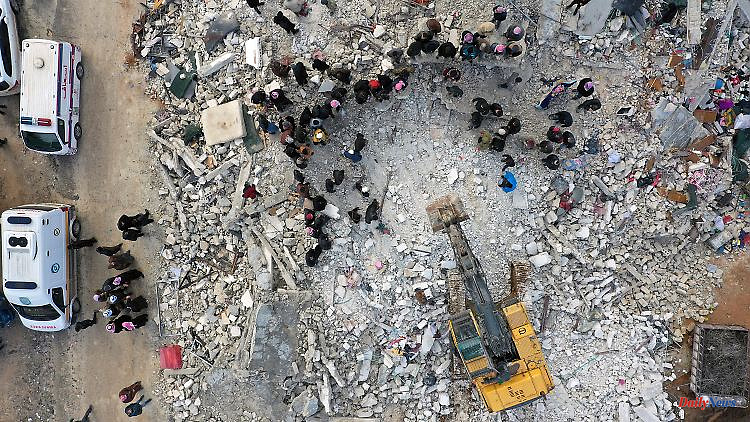While rescue work is underway on the Turkish-Syrian border, fears of new earthquakes are growing. An expert from the German Research Center for Geosciences explains that the danger is actually great - especially a little further north-east.
After the big earthquake in south-east Turkey and regions in Syria early Monday morning, there could be similarly big tremors in nearby regions in the near future. "That was probably not the last strong earthquake in this region. More may follow, especially towards the north-east further inland," said Marco Bohnhoff from the German Research Center for Geosciences (GFZ) Potsdam. The cause is stress redistribution at the plate boundary as a result of Monday's earthquake. "Unfortunately, the danger for the region has not been averted."
Only at the point of the main tremor can it be assumed that the tension there will be gone for the time being, said Bohnhoff. The probability of aftershocks also decreases. "Aftershock activity is strongest immediately after the main tremor." The earthquake affected the so-called East Anatolian fault zone between the Anatolian and Arabian tectonic plates. It had long been considered to be at high risk of earthquakes because it had been seismically quiet there for many centuries while more and more tension had built up at the plate boundary. A major earthquake was therefore overdue at the site.
At 7.8, the earthquake was very strong. "7.8 is almost the strongest that can occur on such a continental plate boundary fault," explained Bohnhoff. "7.8 means that over a length of 200 or more kilometers from the surface to a depth of about 20 kilometers, the earth's plates shift against each other within seconds - or here for up to two minutes - by a few meters." A corresponding amount of energy is released.
An early warning would not have been possible in this specific case, regardless of the system used, explained Bohnhoff. The affected densely populated region is in the immediate vicinity of the epicentral area, which means that there was no period for warnings. In a case like this, an early warning system can only have a very limited effect. It is true that work is already being done on so-called forecast-based early warning systems, with which one could possibly call out increased warning levels before an earthquake. However, such systems are highly complex.












